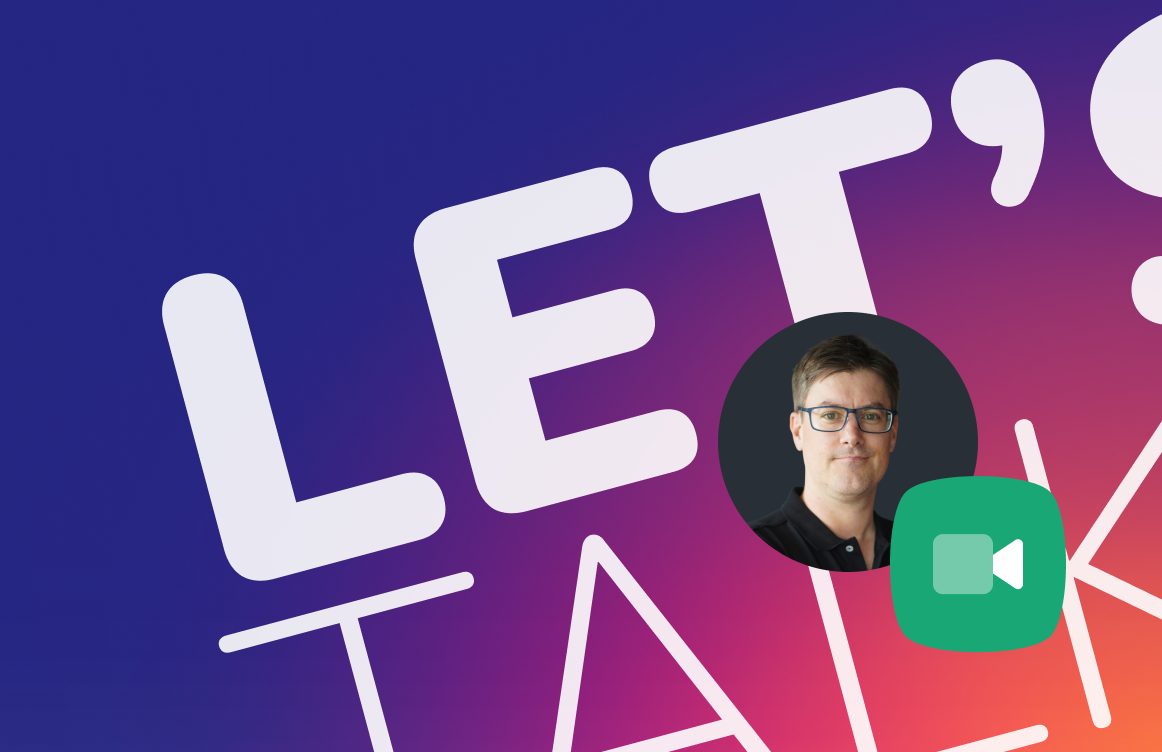
There is no question that TYPO3 is still a widespread CMS, especially in German-speaking countries – against all global trends. More than 70% of TYPO3 powered websites are hosted on a .DE, .AT or .CH domain name and the worldwide marketshare of TYPO3 has dropped to about half a percent of all websites (with the fastest decline of all CMSs in recent years). And even if the rest of the world has long since turned to better, more modern solutions, there are still numerous agencies, especially in our part of the world, that are stubborn and persistent advocates of this outdated monolith. At Bright IT, we got rid of TYPO3 and similar legacy software solutions many years ago for good reasons – and we'd like to share six reasons why it's time for you to say goodbye to TYPO3 and Co as well.
Editorial Productivity is the Key to Great Content
A tool is good if it can be operated efficiently and effectively - even without extensive training and excessive and continuous use of the tool. This also applies to content management systems.
A modern CMS has a simple (!) administrative interface that clearly displays files, texts, and media. With an intuitive UI, editors need few clicks to enter, change and delete their content. There's also less need to explain how to use the CMS – it's almost self-explanatory to users.
They often offer a live preview of the website. With the appropriate authorization, editors can select individual elements directly on the live website, change them in the administration interface and examine them in a preview mode before publishing the changes on the live website. Content is rearranged on the page within flexible layouts in a drag and drop manner, content is easy to re-use across multiple pages, and images are sized and cropped automatically – to name just a few of the feature a state-of-the-art CMS typically provides.
This allows them to work faster and more productively, which ultimately gives them more freedom to produce good content. In other words, a good user experience for editors is the foundation for good content.
Unfortunately, solutions like TYPO3 or even Pimcore are typically cumbersome to use compared to other solutions. They are technical, unintuitive, overloaded with rarely used features and notoriously hard to master (unless you really use them each and every day).
Lack of Continious Ongoing Development and Open Standards
Solutions like Typo3 advertise that they are open source: Developers can customize the software to meet their specific needs however they want. While this sounds good at first, in most cases it leads to proprietary applications on the basis of proprietary or obscure scripting languages – such as TypoScript, which was developed for TYPO3 only. Legacy open source software projects such as TYPO3 often suffers from the folloiwing problems:
There is no organization or clear hierarchy that is centrally responsible for the further development of open source software and sets the direction. A missing or incomplete roadmap (e.g. purely technical focus) leads to the developer community not pulling together or neglecting the further development of functions for marketers. Often, (unpopular) parts of the product are simply miserably neglected at some point.
There is no system of continuous ongoing development - i.e. that new functions and technical improvements are continuously rolled out at intervals of a few weeks or months. On the one hand, this is of course due to the nature of the organization (volunteers), but it is also due to an outdated software architecture that makes such continuous development based on foreseeable migration difficulties much more difficult.
They are not based on open, widely used, and most importantly, still contemporary standards that are the foundation of many different, sometimes competing, software offerings. Obscure scripting languages, properietary and outdated templating logics, bizarre proprietary software data models - these are just a few of the problems often found in solutions like TYPO3.
"That was really innovative at some point, there was no better solution at the time and it still works anyway" is the usual excuse for clinging to such solutions. I blame this especially on agencies that are simply too lazy or too afraid to deal with newer, better tools and technologies. Instead, every project is lumped into the same old rusty bucket over and over again. In some cases, the developers have actually been working with TYPO3 for over 20 years and it is probably simply too uncomfortable to adapt to a new system. However, I do understand that they have certainly become accustomed to the numerous peculiarities and problems of TYPO3 in such a long time period.
Open and up-to-date standards are generally better for developers (and in succession marketers): a global community is formed around them, which is not specialized in a specific software, but instead can contribute its skills to various software projects.
To illustrate: Car manufacturers compete for the same customers and try to develop models that stand out from the competition and are bought by customers. Nevertheless, virtually all cars – regardless of the powertrain type – meet certain standards: be it basic safety features and driver's license categories prescribed by law, an arrangement of essential controls that customers are accustomed to, or simply circular tires dictated by physics. This means that the engineers are not tied to one carmaker with their expertise, but can apply it to another vehicle manufacturer in the same way.
The open standard that defines the core functions in a CMS must be good enough for most scenarios. The core functions should however remain unchanged in any implementation. This is because any adaptation of the core functions leads to a special solution with the following disadvantages:
High, individual training effort
No standard documentation
No support from the software manufacturer
Upgrades are difficult or impossible later
Avoid Creating Unnecessary Problems and Dependencies
When implementing proprietary software like TYPO3, you quickly make yourself completely dependent on the implementation agency. This is due to the lack of standards, low availability of skilled TYPO3 developers, and very high training costs. It's difficult to hire another service provider later to maintain and expand the implementation, or to build up an appropriate team of experts in-house. And if you want to change the CMS later, you have to laboriously recreate the content in the new CMS instead of simply migrating it from TYPO3. That would be a bit like having to get a separate driver's license for each new car.
If a system is customized and extended by means of proprietary plugin logic, then this potentially results in many problems and dependencies:
You are dependent on the development of a specific plugin and the support of the plugin developer.
Open source plugins in particular will eventually be neglected or removed by their developers because their personal priorities have changed.
There is no guarantee that the plugin will remain compatible after a software update.
Often the plugins in systems like TYPO3 do not really fit the requirements and create additional complexity: they are overloaded with functions that are not needed at all, but still must always be compatible with the system.
If a plugin changes the data model of the CMS, you make yourself completely dependent on that plugin and its developer. It's even worse if the same agency that set up your proprietary CMS is behind the plugin. Then the vendor lock-in is perfect.
It is therefore better if plugins and extensions are connected to the CMS via standard interfaces without changing the data model of the CMS. Ideally, any system extension is provided and maintained by either the CMS vendor or the third party system vendor – that maximises your long term chances of having an up-to-date and working extension.
Do Not Buy the Million-Gadget Thing
When selecting systems for your specific needs, keep in mind that each system has its own strengths and weaknesses. Therefore, don't just look for the system with the most comprehensive feature set, but rather the right scope for your specific needs. Systems like TYPO3, or also Pimcore, theoretically offer the possibility to cover almost all functions. But unfortunately, they are often so complex and unusable that many features end up being worthless because they cannot be used well by the users.
A better approach is to connect several clearly defined systems using a modern composable architecture. This allows you to flexibly combine partial solutions and gives you the option to effortlessly replace individual subsystems later without having to rebuild the entire system. Doing so allows you to take an agile and adaptable approach to system development and ensures that the systems used are optimally tailored to your specific requirements.
As an example let us take the use case of sending emails. There is a variety of SaaS vendors on the market that specialise in sending all kinds of emails efficiently for your website or online shop – and they are often easy to integrate with a modern CMS. Similar out of the box features in a monolithic CMS usually lack the focused and modern functionality that such third party systems can provide.
A Good Content Model Creates Long-Term Joy
A content model is essentially a data model from the editor's point of view. An effective and consistent content model within a CMS should be able to be explained in a way that can be understood in the shortest possible time – ideally in just a few minutes. This clarity makes continuous content maintenance much easier for editors and ensures a smooth integration of new functions into the existing concept. This prevents an inconsistent monster solution from developing over time. A standardized data model makes it possible to migrate data to another CMS at a later date, because the migration is much easier and more predictable.
A good content model for us at Bright IT also rules out storing content as HTML code, especially in rich text fields in the CMS, where visual customizations to the content are possible. Avoiding the mixing of HTML code and content makes it easier to make changes later, such as a visual overhaul of the web presence, and ensures error-free use of the content, whether for an app or other purposes. A modern CMS knows only structured content – including richt text fields.
SAAS Solutions Are (Almost) Always the Better Choice
The mere operation of a CMS should not be a core task of a company or a service provider. For this reason, we prefer it when the core system is run by the software vendor, who then continuously applies security patches and functional updates without our intervention. With a clear division of responsibilities between the SaaS vendor and us as the service provider, there are clear boundaries where we can customize and extend the system. This ensures a secure and scalable operation of the SaaS solution. It also prevents the creation of a non-standard solution that can no longer be updated or migrated. Data migration to another system usually becomes much easier. Content management systems offered as SaaS typically also offer a transparent subscription model, where the ongoing and expected costs are clearly visible.
In contrast, to use an outdated CMS like TYPO3, you need to run the software yourself (or hire someone to do so). You must be able to maintain the necessary IT infrastructure and have or buy in the necessary knowledge for its operation and maintenance within the company. Given the extreme IT skills shortage and many cheaper cloud-hosted alternatives, this way of delivering software is simply no longer up to the task.
Conclusion
If you want to continue using TYPO3, you have to be a vintage software fan. Because what was still great and visionary at the end of the 20th century is nowadays simply hopelessly outdated. Although you can theoretically adapt the CMS optimally to your needs, the effort and costs you have to bear are simply too high, and your needs are also continuously changing.
Therefore, it is better to switch to a content management system that is based on modern, open standards, is developed by a professional provider from the very beginning and can be quickly adapted to your ever changing needs.
For the implementation of a modern CMS, you should choose an agency that does not try to squeeze your requirements into TYPO3, but understands your needs and proposes and implements the most suitable CMS for you. At Bright IT we don't promote a single or few solutions for all our clients' needs. Instead we draw from a continuously evolving pool of up-to-date solutions (such as Storyblok, Contentful, Optimizely or where it fits also Wordpress). And based on the needs of a particular client project we offer one or several options that best fit the job in a given context based on our many years of experience in the field.
Talk to us if you require guidance on this.



